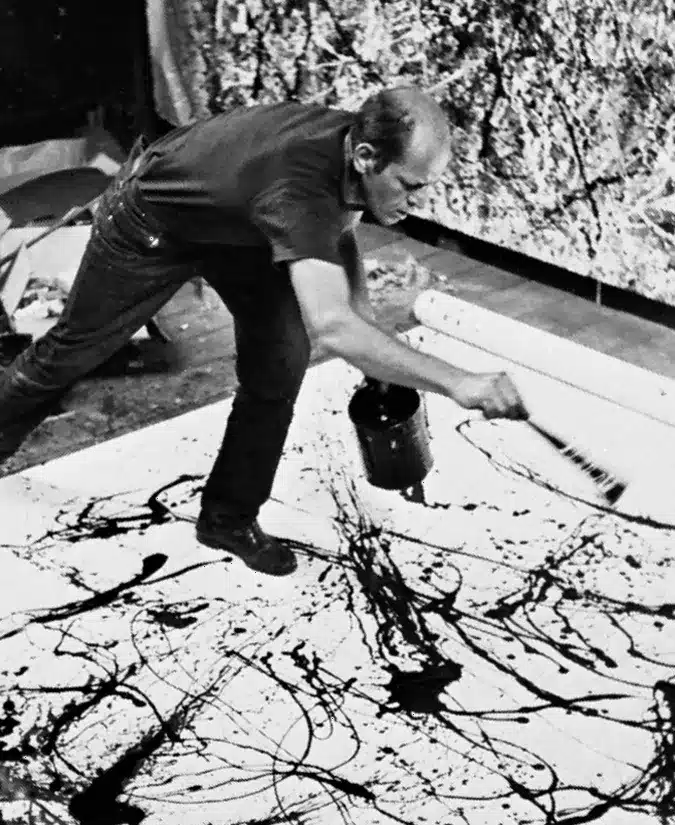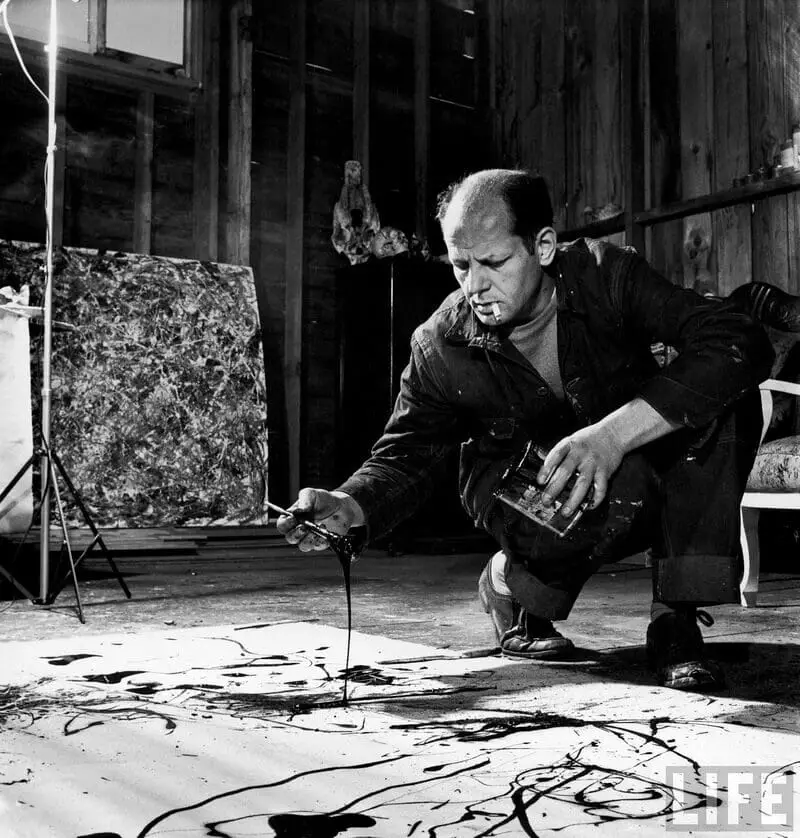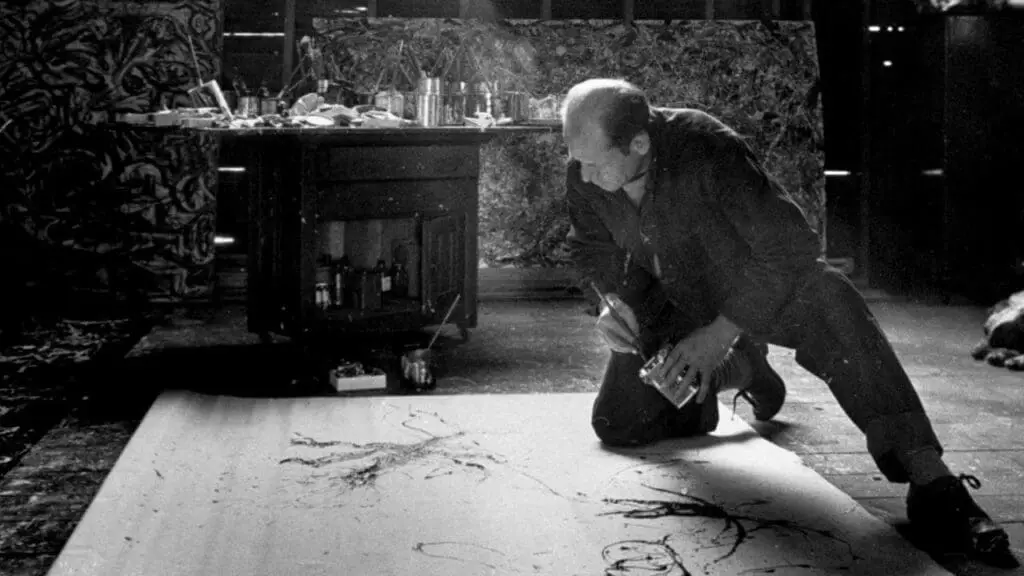Jackson Pollock remains one of the most significant American artists who ever lived. He is best known for his drip paint technique.
Jackson Pollock, an iconic figure of the Abstract Expressionist movement, revolutionized the art world with his unconventional and groundbreaking painting techniques. One of his artistic choices is his preference for enamel paint. Read on; we will embark on a journey to understand the reasons behind Pollock’s fascination with enamel paint and explore its profound impact on his artistic process.
Table of Contents
- The Allure Of Enamel Paint And Jackson Pollock’s Art
- Symbolic Significance Of Enamel Paint And Jackson Pollock
- Preservation Challenges And Conservation Effort Challenges Of Enamel Paint
- Jackson’s Pollock Artistic Revolution And Enamel Paint
- Jackson Pollock’s Inspiration Beyond The Canvas
- Related Questions
The Allure Of Enamel Paint And Jackson Pollock’s Art
Enamel paint, commonly utilized for industrial applications and household surfaces, held a certain allure for Jackson Pollock. By adopting this non-traditional medium, he ventured into uncharted artistic territory, embracing its unique properties and exploring its potential for creative expression.
Dynamic Application Techniques And Enamel Paint
One of the main reasons Pollock gravitated towards enamel paint was its fluidity and quick-drying nature. These characteristics allowed him to experiment with various dynamic application techniques, including pouring, dripping, and splattering.
Through these techniques, Pollock sought to capture a sense of immediacy and spontaneity, blurring the line between control and chance.
Expressive Power Of Color Of Enamel Paint And Jackson Pollock
Enamel paint offered Pollock an exceptional intensity and vibrancy of color that traditional oil or acrylic paints couldn’t replicate. The glossy finish of enamel paint enhanced the visual impact of his work, creating a luminous and captivating effect. This heightened chromatic experience enabled Pollock to convey powerful emotions and establish a direct connection with the viewer.
Texture As A Language And Enamel Paint
Beyond color, enamel paint allowed Pollocky to explore texture as a means of artistic communication. The thick consistency of the paint allowed him to layer, build up, and manipulate its surface.
Using sticks, brushes, or even his bare hands adds depth and complexity to his compositions. The smooth and rough texture interplay contributed to his art’s tactile and visceral nature.
Physicality And Gesture And Enamel Paint
Pollock’s choice of enamel paint aligned with his desire to incorporate his entire body into creation. By spreading out large canvases on the floor, Pollock could physically engage with the paint, moving around the canvas and employing his whole body in the creative process.
This physicality of his artistic approach became an extension of his inner emotions, enabling him to express himself authentically and passionately.
Layering And Depth Of The Enamel Paint
The quick-drying property of enamel paint allowed Pollock to work rapidly and spontaneously, facilitating the layering of multiple colors. Through this technique, he achieved depth and complexity in his composition as the underlying layers interacted with the subsequent ones.
The transparent and opaque qualities of the paint created a visual interplay, inviting viewers to explore the intricate dimensions of his paintings.
Symbolic Significance Of Enamel Paint And Jackson Pollock
Pollock’s fascination with enamel paint went beyond its technical attributes. For him, the choice of this unconventional medium symbolized a departure from traditional artistic conventions.
By using enamel paint, associated with industrial and practical purposes, Pollock challenged the notions of high art and embraced a democratic approach to creativity. This subversion of expectations reflected his rebellious spirit and desire to redefine artistic expression boundaries.
Legacy And Influence Of Jackson Pollock’s Enamel Paint
Pollock’s innovative use of enamel paint left an indelible mark on the art world and continues influencing artists today. His groundbreaking techniques and unconventional choices opened up new avenues for experimentation and inspired subsequent generations of artists to push the boundaries of their creativity.

The spirit of freedom, spontaneity, and innovation inherent in Pollock’s work resonates with contemporary artists, encouraging them to explore unconventional approaches and materials in their artistic practice.
Preservation Challenges And Conservation Effort Challenges Of Enamel Paint
While enamel paint offered Pollock unique artistic possibilities, it also presented challenges in preservation and conservation. The glossy surface of the paint, while visually appealing, made the artwork more susceptible to damage, such as cracking and chipping over time.
Additionally, the quick-drying nature of enamel paint meant making alterations or adjustments to the composition once applied was challenging. These preservation challenges have required art conservators to develop specialized techniques and approaches to ensure the longevity and integrity of Pollock’s enamel paintings.

Jackson’s Pollock Artistic Revolution And Enamel Paint
Pollock’s choice to utilize enamel paint was a significant departure from traditional artistic practices, marking a shift towards abstract expressionism and the liberation of artistic freedom.
Pollock initiated a revolution in art by breaking away from established norms. His innovative use of enamel paint challenged the preconceived notions of what constituted art, paving the way for new artistic movements and approaches that embraced experimentation, spontaneity, and emotional expression.
Embracing Risk And Unleashing Creativity – Pollock’s Enamel Paint
The selection of enamel paint as his primary medium embodied Pollock’s willingness to take risks and explore uncharted territories. He embraced the unpredictability and physicality of the medium, allowing it to guide his artistic process.
Enamel paint catalyzed his creative expression, empowering him to transcend conventional boundaries and tap into his innermost emotions and thoughts.

Jackson Pollock’s Inspiration Beyond The Canvas
Pollock’s affinity for enamel paint extended beyond the realm of painting on canvas. He also experimented with other surfaces and materials like glass, paper, and metal. His innovative spirit and willingness to explore new possibilities influenced subsequent generations of artists to embrace unconventional materials and expand the boundaries of artistic expression.:
Jackson Pollock’s fascination with enamel paint exemplifies his quest for artistic innovation and his commitment to pushing the boundaries of creativity. The fluidity, intense colors, and unique qualities of enamel paint enabled him to forge a new path in abstract expressionism, revolutionizing the art world.
Pollock’s bold choices and willingness to embrace the unknown inspire artists today, encouraging them to break free from traditional conventions and unleash their creative potential. The legacy of Pollock’s enamel paintings is a testament to the transformative power of artistic experimentation and the enduring impact of one artist’s bold choices on the trajectory of art history.
Anita Louise Art is dedicated to art education, great artists, and inspiring others to find and create their art. We love art that uplifts and inspires. #ArtToMakeYouSmile! #ArtToMakeYouHappy!
If you want to see any of my art, you can find out more by clicking here. If you are interested in what inspires me and my paintings, you can discover more by clicking here.
We have a free newsletter and would love you to be part of our community; you can subscribe to the newsletter by clicking here. If you have any questions, I would be happy to talk to you. You can reach me, Anita, by clicking here.
Subscribe to our Anita Louise Art YouTube Channel with great videos and information by clicking here.
Join us for our podcast “5 Minutes With Art.” Spend just 5 minutes a week with us to discover and learn about great art and artists. You can find out more about our podcast by clicking here.
Related Questions
What Makes Jackson Pollock’s Art So Valuable?
Jackson Pollock was a brilliant and creative artist who was not afraid to try new techniques with art. He is known for foundering Abstract Expressionism and the gestural technique, also known as action painting. He never saw much success in his lifetime, but today his painting fetch millions of dollars and are considered extremely valuable.
By clicking here, you can discover more by reading What Makes Jackson Pollock’s Art So Valuable?.
Did They Use An Original Jackson Pollock Painting In Ex Machina Or A Replica?
They would have used a copy of this painting No 5 (1948) as the painting was sold by David Geffen, a Hollywood producer and film studio executive, for over USD 140 million in 2006. Geffen would have sold the painting long before the movie was produced, and no respectable art collector would place such a valuable work of art on a film set or studio.
By clicking here, you can learn more by reading Did They Use An Original Jackson Pollock Painting In Ex Machina Or A Replica?.
How Much Is The Jackson Pollock Painting Worth In The Movie “The Accountant”?
We do not know precisely how much the Jackson Pollock Free Form painting is worth, but we know that it is owned by the Museum of Modern Art in New York City, and the painting in the movie The Accountant is a reproduction or copy. Similar Jackson Pollock paintings have sold for over $100 million. So we know that Jackson Pollock’s paintings are precious in today’s art market.
By clicking here, you can learn more by reading How Much Is The Jackson Pollock Painting Worth In The Movie “The Accountant”?.


